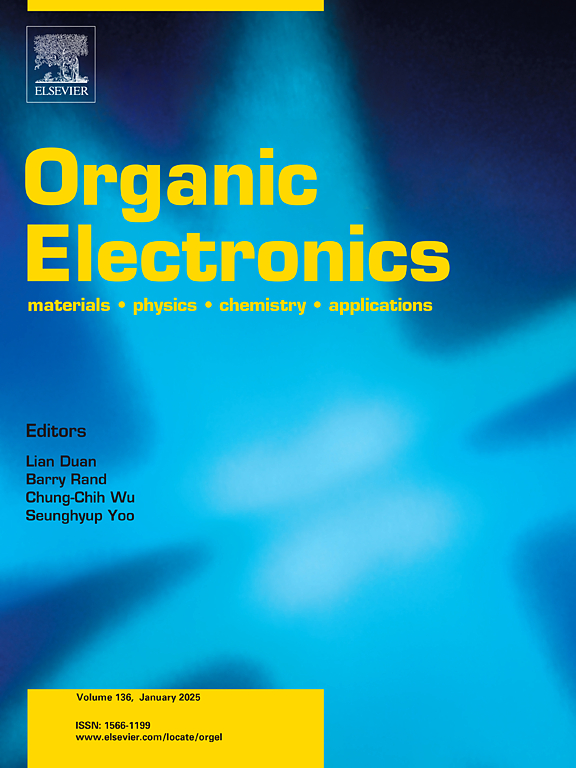机器学习辅助设计吩噻嗪和吩恶嗪基染料。数据库生成和属性预测
IF 2.6
4区 工程技术
Q3 MATERIALS SCIENCE, MULTIDISCIPLINARY
引用次数: 0
摘要
开发用于有机电子器件的高效染料,需要精心设计具有最佳电子和光物理性质的分子结构。在这项研究中,我们利用机器学习(ML)来协助设计和优化吩噻嗪和吩恶嗪基染料,由于它们具有可调谐的电子特性,它们是这些应用的有希望的候选者。设计了5k吩噻嗪和吩恶嗪基染料,并使用ML模型预测其吸收最大值。选出30名有红移倾向的候选人。所选染料均含有吩噻嗪基团。这些结果突出了机器学习辅助设计的潜力,可以加速发现用于下一代光电器件的高性能染料。我们的发现为未来有机染料的设计提供了一个路线图,具有潜在的应用前景。本文章由计算机程序翻译,如有差异,请以英文原文为准。

Machine learning assisted designing of phenothiazine and phenoxazine-based dyes. Database generation and property prediction
The development of efficient dyes for organic electronic devices, requires the careful design of molecular structures with optimal electronic and photophysical properties. In this study, we employ machine learning (ML) to assist in the design and optimization of phenothiazine and phenoxazine-based dyes, which are promising candidates for these applications due to their tunable electronic properties. 5k phenothiazine and phenoxazine-based dyes are designed and ML models are used to predict their absorption maxima values. 30 promising candidates with red-shifted are selected. All the selected dyes have phenothiazine group. The results highlight the potential of ML-assisted design to accelerate the discovery of high-performance dyes for use in next-generation optoelectronic devices. Our findings provide a roadmap for future efforts in the design of organic dyes, with potential applications.
求助全文
通过发布文献求助,成功后即可免费获取论文全文。
去求助
来源期刊

Organic Electronics
工程技术-材料科学:综合
CiteScore
6.60
自引率
6.20%
发文量
238
审稿时长
44 days
期刊介绍:
Organic Electronics is a journal whose primary interdisciplinary focus is on materials and phenomena related to organic devices such as light emitting diodes, thin film transistors, photovoltaic cells, sensors, memories, etc.
Papers suitable for publication in this journal cover such topics as photoconductive and electronic properties of organic materials, thin film structures and characterization in the context of organic devices, charge and exciton transport, organic electronic and optoelectronic devices.
 求助内容:
求助内容: 应助结果提醒方式:
应助结果提醒方式:


